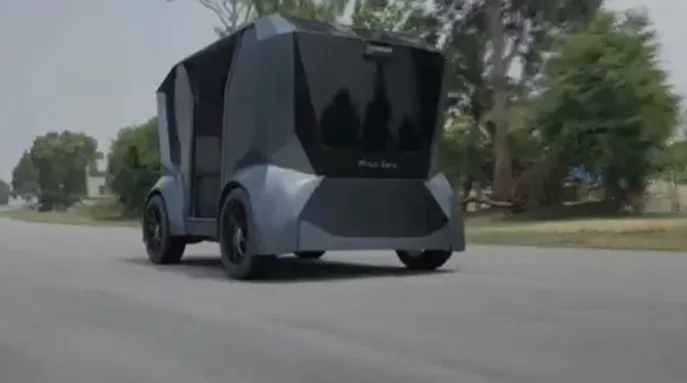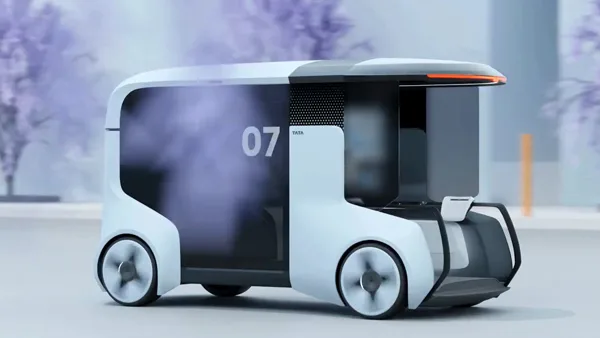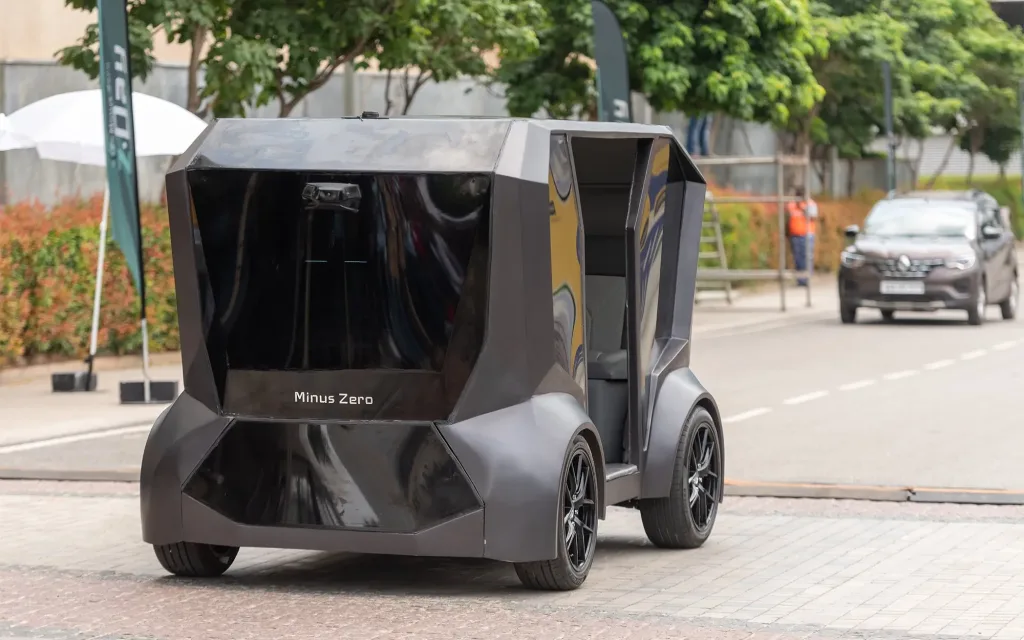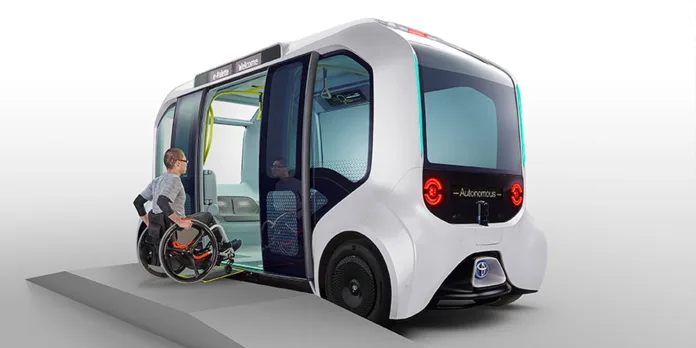Discover how Tata Yu, the innovative autonomous vehicle, is set to transform urban mobility by combining passenger and cargo transport in one revolutionary design.
The Dawn of a New Era in Urban Transportation
In a groundbreaking development that’s set to revolutionize urban mobility, Tata Motors has unveiled its latest innovation – the Tata Yu. This autonomous, self-driving vehicle is not just another concept car; it’s a glimpse into the future of transportation that seamlessly blends passenger and cargo transport. Let’s dive into what makes the Tata Yu a potential game-changer in the world of autonomous vehicles.

Meet Tata Yu: Where Innovation Meets Practicality
The Tata Yu is more than just a vehicle; it’s a solution to the growing challenges of urban logistics and passenger transport. Here’s what sets it apart:
- Dual-Purpose Design: Uniquely engineered to carry both goods and passengers, the Tata Yu addresses two critical urban needs simultaneously. This innovative approach could significantly reduce the number of vehicles on the road, easing congestion and lowering emissions.
- Autonomous Technology: Fully self-driving capabilities for efficient navigation. The Tata Yu employs advanced AI and machine learning algorithms to navigate complex urban environments safely and efficiently.
- Compact Yet Spacious: At 3,700 mm long, 1,500 mm wide, and 1,800 mm tall, it’s perfect for urban environments. The clever design maximizes interior space while maintaining a small footprint, ideal for navigating crowded city streets.
- Electric Powertrain: Hub-mounted motors for eco-friendly operation. This design choice not only reduces environmental impact but also allows for more flexible interior layouts and improved vehicle dynamics.
- Innovative Cargo Management: Automated sorting and delivery of e-commerce parcels. The Tata Yu’s intelligent cargo system can organize packages based on delivery routes, significantly streamlining the last-mile delivery process.
The Brains Behind the Innovation
The Tata Yu project is a testament to collaborative innovation, bringing together some of the brightest minds in automotive design and engineering:
- Creators: Ansuman Mallik and Atmaj Verma, two promising young designers who envisioned a solution to urban mobility challenges.
- Project Duration: 6 months of intensive development and refinement.
- Institution: Strate School of Design, Bangalore, known for its cutting-edge approach to design education.
- Sponsorship: Tata Motors, demonstrating the company’s commitment to fostering innovation and supporting young talent.
- Mentorship:
- Ajay Jain (TATA Motors): Bringing years of industry experience to guide the project.
- Edmund Spitz (HOD of Transportation Design, Strate School of Design, Bangalore): Offering expert insights into automotive design principles.
- Thomas Dal (Dean, Strate School of Design Bangalore): Providing overall project guidance and academic support.
This collaboration between industry leaders and academic institutions showcases the power of partnerships in driving technological advancements.
How Tata Yu Works: A Seamless Blend of Cargo and Passenger Transport
The Tata Yu’s operation is as innovative as its design, offering a glimpse into the future of urban mobility:
- Cargo Transport:
- The middle section of the vehicle is dedicated to storing e-commerce parcels of various sizes.
- An advanced AI system automatically sorts packages based on delivery destinations, optimizing route efficiency.
- Two innovative delivery methods are employed:
a) Direct deposit into automated transfer systems (“bridges”) at offices and housing complexes, reducing human intervention and speeding up deliveries.
b) Pickup by gig workers for last-mile delivery to individual addresses, creating new employment opportunities in the gig economy.
- Passenger Transport:
- An intuitive app-based booking system, similar to popular ride-hailing services, allows users to easily request rides.
- The vehicle can accommodate up to two passengers comfortably, making it ideal for individual or small group travel.
- Smart integration with existing public transport routes ensures efficient travel and reduces overall journey times.

The Road Ahead: Tata Yu’s Journey to Reality
While the Tata Yu is currently a patented concept, its potential impact on urban mobility is immense. The creators envision a commercial launch around 2030, aligning with the global shift towards autonomous and electric vehicles. This timeline allows for further refinement of the technology and necessary infrastructure development.
Key milestones on the road to commercialization include:
- Regulatory Approval: Working with government bodies to establish guidelines for autonomous vehicle operation.
- Infrastructure Development: Collaborating with city planners to create the necessary support systems, including charging stations and automated transfer bridges.
- Public Acceptance: Engaging in public education campaigns to build trust in autonomous vehicle technology.
- Fleet Testing: Conducting extensive real-world trials to ensure safety and efficiency.
The Impact of Autonomous Vehicles on Urban Mobility
As we look towards a future with vehicles like the Tata Yu, it’s crucial to understand the potential impact on our cities and daily lives:
| Aspect | Impact of Autonomous Vehicles |
|---|---|
| Traffic Flow | Improved efficiency and reduced congestion through optimized routing and reduced human error |
| Safety | Potential significant reduction in accidents due to elimination of human error and fatigue |
| Accessibility | Enhanced mobility for elderly, disabled, and non-driving individuals, promoting inclusivity |
| Environment | Reduced emissions with electric powertrains and optimized vehicle usage |
| Urban Planning | Potential redesign of city spaces with less need for parking, freeing up land for green spaces or housing |
| Employment | Shift in job markets, particularly in transportation and logistics, with new opportunities in AV maintenance and oversight |
| Economic Impact | Potential reduction in transportation costs for businesses and individuals |

Conclusion: A Glimpse into the Future of Urban Mobility
The Tata Yu represents more than just technological advancement; it’s a vision of how our cities might function in the coming decades. By combining passenger and cargo transport in a single, efficient autonomous vehicle, Tata Motors is paving the way for smarter, more sustainable urban environments.
As we eagerly await the commercial debut of the Tata Yu, one thing is clear: the future of urban mobility is autonomous, electric, and more integrated than ever before. The journey from concept to reality may be long, but the destination promises a revolution in how we move and live in our cities.
Stay tuned for more updates on this exciting development in autonomous vehicle technology, as we continue to track the progress of the Tata Yu and its potential to reshape our urban landscapes!


